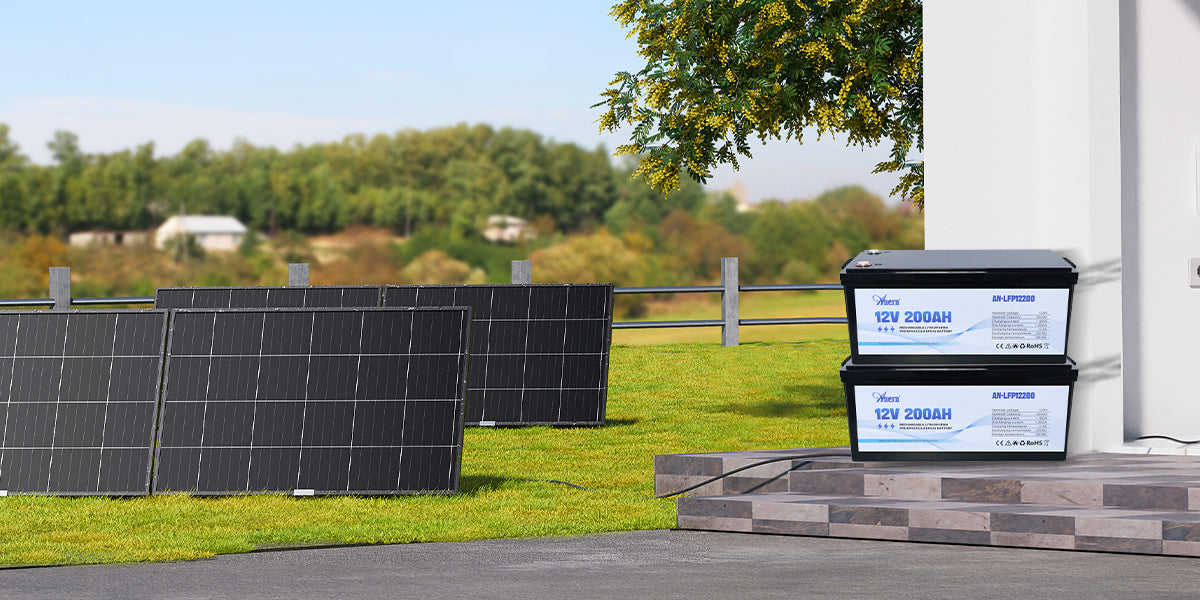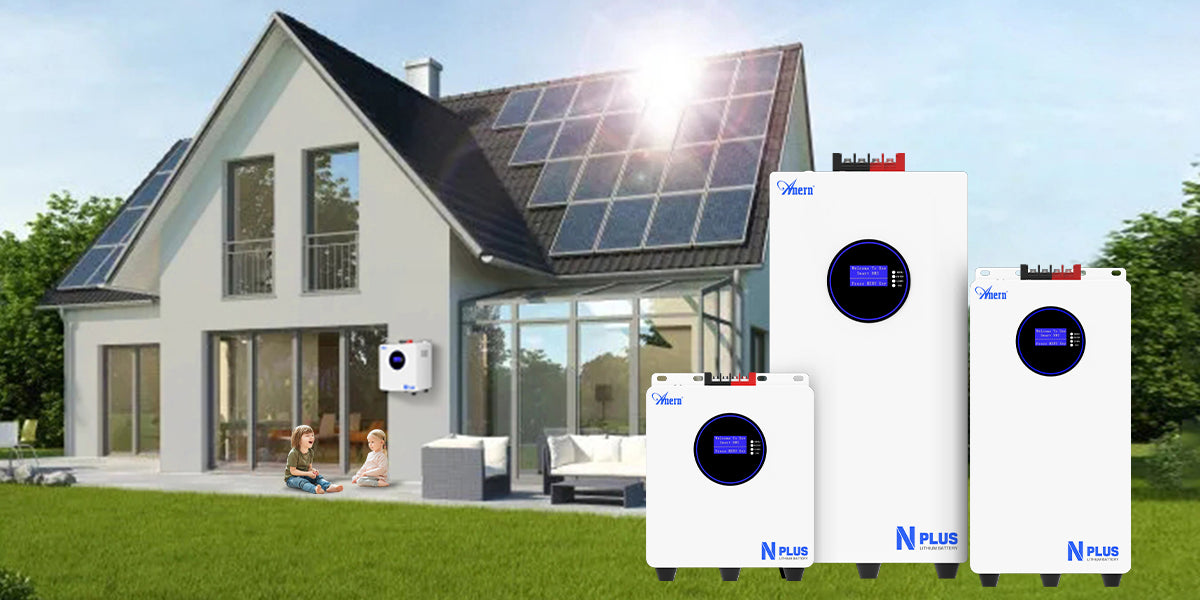Solar energy systems depend on safe, long-lasting batteries. LiFePO4 batteries are now a top choice because of their strong safety record. Many solar users want power that is stable, quiet, and low-risk. That is where LiFePO4 steps in.
The Critical Role of Battery Safety in Solar Energy Systems
Solar setups often run without people watching over them. Many are placed in homes, cabins, or RVs. A battery problem here could cause fire, damage, or worse. So safety is not just nice to have. It is essential.
A solar battery must stay stable under heat, charge correctly, and stop working safely if something goes wrong. Unsafe batteries may swell, overheat, or leak. Solar energy systems should always use battery types that prevent those risks.
Safety Profile of LiFePO4 Batteries
Thermal Stability
LiFePO4 batteries have excellent thermal stability at high heat, usually between 270°C and 300°C. This feature makes them considerably safer in outdoor solar installations, as battery housings can be overheated in direct sunshine. LiFePO4 keeps thermal runaway at bay in comparison with other available lithium chemistries. Even in cases of charging faults or inverter faults, temperature increases stay in check. In fire testing, LiFePO4 batteries tend to vent gas instead of combusting, highlighting their built-in protection measures.
Chemical Safety
The cathode material—lithium iron phosphate—has excellent chemical stability even under strain. It does not release oxygen under heat or abuse. This one quality prevents most of the normal fire hazards of cobalt-based batteries. In solar power applications, where daily cycles of use happen along with occasional abusive handling, this chemical stability considerably reduces the chances of internal failure or gas buildup.
Tolerance to Overcharge and Overdischarge
Solar charge controllers are not without flaws. During power grid blackouts, shading events, or defective wiring, voltage spikes and full discharges can occur. Fortunately, LiFePO4 cells have higher fault tolerance under such events than most other chemistry packs. Despite being overcharged at 4.2V, it does not catch fire. Despite deep discharges, they barely swell or leak. As long as such prime limits are not exceeded, cells will automatically revert back to normal operational condition.
Response to Short Circuit and Mechanical Damage
If there is a short circuit—due to a wiring fault, physical damage, or connector failure—LiFePO4 cells have a slow release of power. Internal resistance is essential in reducing peak current. As such, there is less heat build-up, and the housing is able to withstand most scenarios unscathed. Even under drop, crush, or puncture test, they are unignited. For solar setups in RVs, boats, or off-grid shacks, this toughness matters.
Cycle Life and Degradation Safety
LiFePO4 batteries typically deliver 2,000 to 6,000 full charge-discharge cycles at 80% depth of discharge. The internal structure remains stable throughout. Unlike other lithium types, they do not form dendrites or gas pockets over time. Even after 10 years of solar use, aged batteries retain their safety profile. Their gradual decline does not increase the chance of failure.
Environmental Safety and Toxicity
LiFePO4 batteries contain no cobalt, nickel, or lead—toxics known to poison workers, environments, and recyclers. Because they contain no such materials, LiFePO4 units pose dramatically lower hazards in manufacture, use, and end-of-life disposal. In solar installations in rural farms, schools, or near waterways, this feature adds long-term worth. In case of leakage of any of the cells, chances of inflicting damage on plants, animals, or groundwater significantly reduce.
How Battery Management Systems (BMS) Bolster LiFePO4 Safety
Generally, each LiFePO4 pack contains an inbuilt Battery Management System (BMS). This advanced module constantly keeps checks on voltages of cells in real time, current consumption, as well as internal temperature. If any of these exceeds permissible values, power throughput is automatically stopped by the BMS. In addition, it isolates the pack in order to avoid overcharge as well as excessive draining. A few of these BMSes have built-in cell balancing, thus maintaining each of these cells synchronized with others. In solar systems, it allows such packs to function automatically throughout day-night cycles, weather changes, as well as changing seasonal loads.
Safety Highlights of LiFePO4 Batteries
| Safety Feature | LiFePO4 Performance |
| Thermal Stability | High (270–300°C) |
| Chemical Reaction Risk | Very low |
| Overcharge/Overdischarge Handling | Good tolerance |
| Short Circuit Response | Low heat release |
| Mechanical Shock Resistance | High |
| Lifespan and Aging Risk | Stable over 2000+ cycles |
| Toxic Materials | No cobalt, nickel, or lead |
| BMS Protection | Standard feature |
Advantages of LiFePO4 Batteries in Solar
| Advantage | Description |
| Reliable Daily Use | LiFePO4 batteries perform consistently day-to-day without degradation. They store energy well and operate quietly, making them ideal for solar systems in homes, RVs, or off-grid setups. |
| Long Lifespan | LiFePO4 batteries last 5 to 10 years, reducing the need for frequent replacements. Their long lifespan lowers the total cost of ownership in solar applications. |
| No Memory Effect | Unlike older battery chemistries, LiFePO4 does not lose capacity if not fully charged each time. This makes partial charging convenient without affecting long-term battery health. |
| Low Maintenance | These batteries require minimal upkeep. No need for water refills, cleaning, or venting. They are sealed, reducing the risk of leaks or gas emissions, making them low-maintenance in solar setups. |
| Stable Energy Delivery | LiFePO4 batteries maintain stable voltage output even when the charge is low. This ensures that connected solar inverters and appliances operate efficiently and safely, avoiding damaging voltage drops. |
Practical Safety Measures: Installation and Operational Best Practices for Solar Setups
- Only charge LiFePO4 batteries with a charger that supports their voltage and chemistry. A mismatch can overheat the battery.
- Keep the battery in a place with good ventilation. Avoid placing it near heaters or direct sunlight. Heat can affect even stable batteries over time.
- Tight, clean wiring helps prevent shorts. Always use a fuse or circuit breaker between the battery and inverter.
- Fasten the battery to stop it from shifting or tipping. This helps protect it from shocks or falls, especially in moving vehicles.
- Do not try to bypass the BMS. If the battery stops charging or powering devices, check for faults rather than forcing it to work.
- Keep the battery above 10% charge. Deep discharge too often may shorten its life.
- If storing the battery for months, keep it half-charged in a cool, dry place. Avoid metal contact on the terminals.
Summary
LiFePO4 batteries offer superior solar installation safety. They can endure heat, chemical reactions, and impacts better than most others in the lithium category. If treated with respect and fitted with a top-of-the-line BMS, they become a smart decision for for home, off-grid, or mobile solar users.





Leave a comment
All comments are moderated before being published.
This site is protected by hCaptcha and the hCaptcha Privacy Policy and Terms of Service apply.